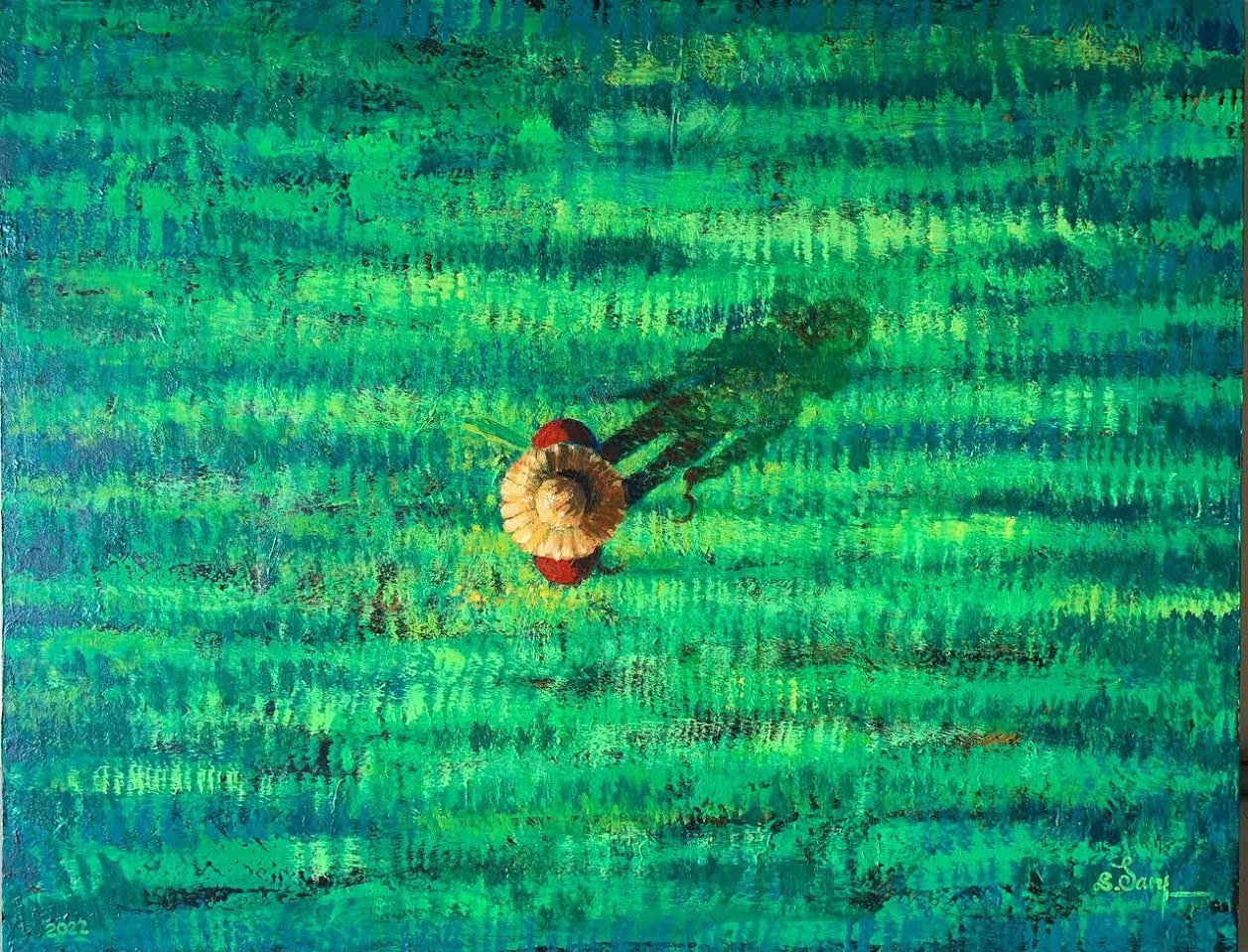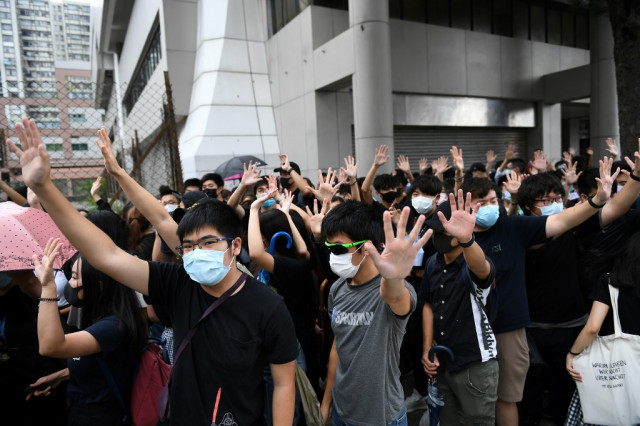Nou Sary – Portraying Cambodia’s Traditional Life in Paintings of Humans and Nature
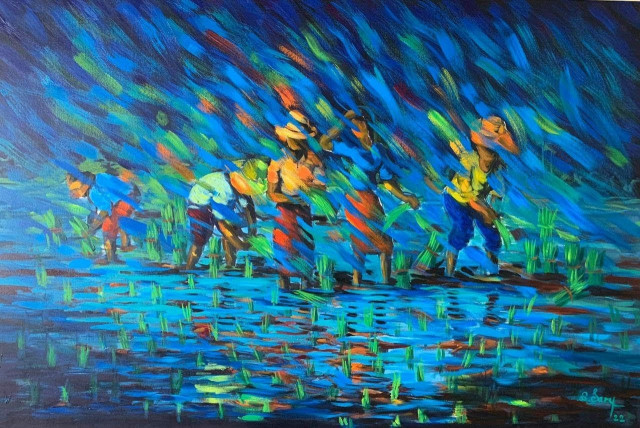
- By Teng Yalirozy
- September 30, 2022 7:30 PM
PHNOM PENH—Growing rice in the paddy fields and living according to Nature’s cycles have been Cambodians’ traditional way of life. While this is changing and this lifestyle may one day be forgotten due to the changing environment and digital age, humans and Nature cannot be entirely apart.
Cambodian artist Nou Sary addresses this, speaking of Nature and Cambodians working in rice fields in his latest series of paintings entitled “Human and Nature” exhibited at the Sofitel Phnom Penh Phokeethra Hotel through October.
“Why Nature,” he said during an interview. “I want to demonstrate that we, human beings, all around the world need Nature,” Sary said. “These paintings are…showing that we cannot live without Nature.”
These paintings, he said, are meant to create emotions and draw people’s attention to elements of life in the country: the portrayal of humans, rice fields, water and nature in general. Reflecting a love of Cambodians’ traditional way of life, the 17 paintings in the exhibition reflects a time when work in the fields was done by hand and with love, without today’s equipment that, of course, facilitates agriculture.
Nature is a theme that Sary has addressed throughout his career, and which led him to win an award in France in 2005.
In his depictions of workers in the fields, he uses green as a reflection of forests and plants, blue for water and grey for the soil: the elements of the natural environment in which human beings live and where, at times, they seek solace from the bustling cities with their skyscrapers.
The exhibition also includes sculptures made of materials found in nature. “Man Harvest” was sculpted with climbing plants Sary found in the forest. Another entitled “Family” is made of iron and jute, or krochau in Khmer, which is a long and silky fiber that can be spun into strong, coarse threads and which Cambodians weave to make mats.
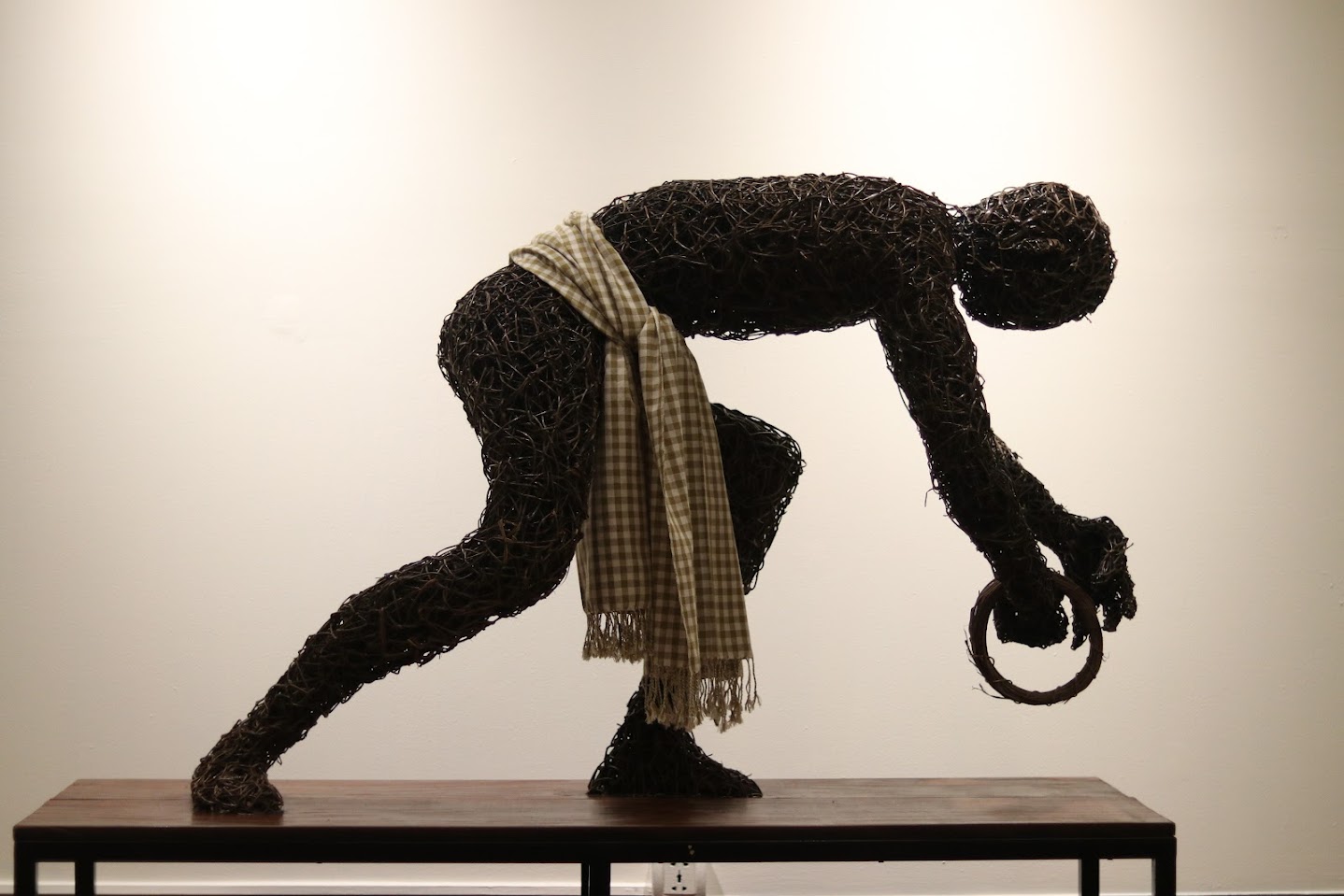
“These…sculptures are made from natural elements extracted from the forest in Cambodia, ”he said. “I don’t understand this [era] where people commit deforestation and take [forest] land for sale,” the artist said. “It hurts my feelings, and sooner or later, the Planet Earth will be destroyed.”
Being an artist in Cambodia: a difficult path
Born in a rice farming family in Kandal Province in 1971, Nou Sary moved to Phnom Penh—"the city of hope”—in 1984. He spent two years living on the street before being accepted in an orphanage where he was able to study.
Later on, Sary studied at the Royal University of Fine Arts in Phnom Penh while also working at the French Institute. He later obtained a scholarship from the French government to pursue post-graduate arts studies in France. He lived in that country for several years, working as a chef at a Japanese restaurant at night to support himself, he said.
Today, being an artist in Cambodia is a difficult path, Sary said. Oftentimes, works that took artists days and weeks to make will sell for hardly anything. “Many artists are struggling to survive and make a living,” he said. “The market for contemporary art is hard to find as Cambodian people don’t really value it—only foreigners tend to value the paintings and sculptures of Cambodian artists.”
Sary said that he wished the Cambodian government and the Ministry of Culture and Fine Arts would set up programs to help struggling artists.
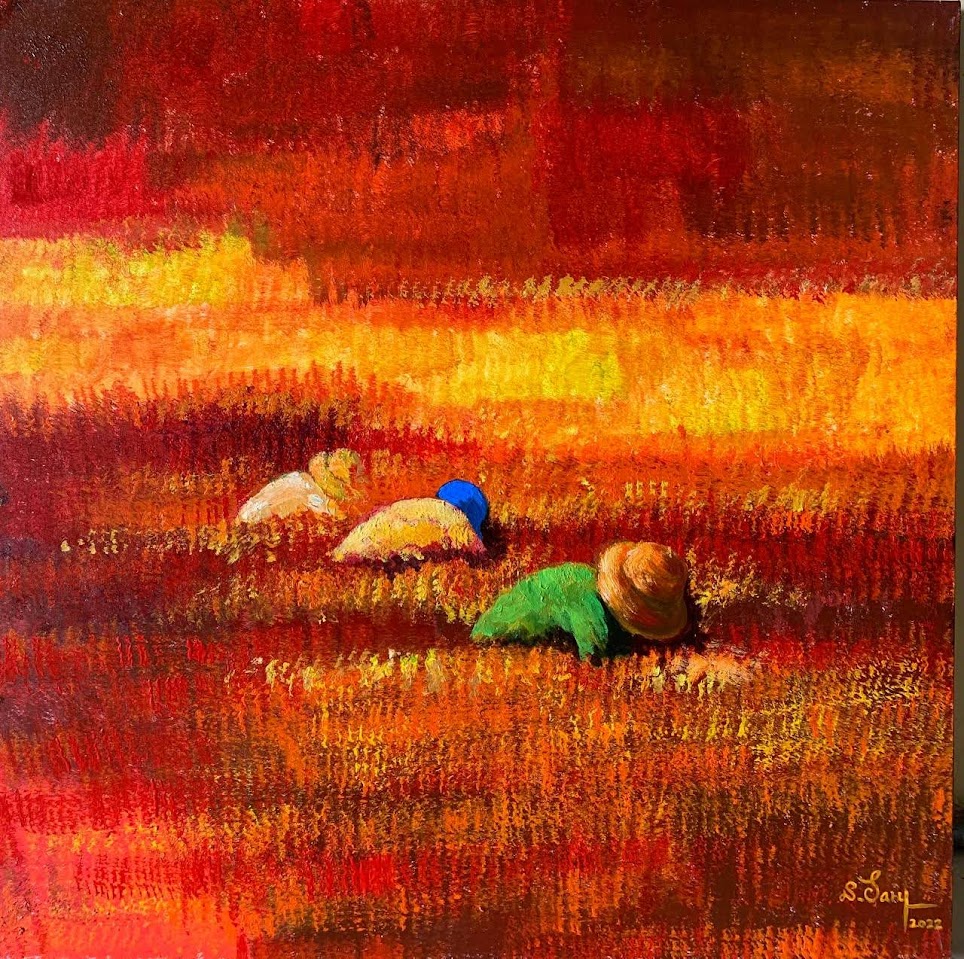
“Paintings and sculptures are of great value,” Sary said with passion in his voice. “Angkor Wat is the world's Number 1 heritage site. Cambodians are powerful and capable of creating many amazing things. And yet, not many [Cambodians] recognize {Cambodian artists’] talent, whereas artists in foreign countries are deeply valued.”
Sary spent more than six months producing the series of works exhibited at the Sofitel Phnom Penh Phokeethra Hotel. During the process, he said he was challenged by the resources on hand, time and the space he had in his studio. These works on exhibit are therefore a result of inspiration and the work of an artist who adapted to the conditions he had to deal with, he said.
